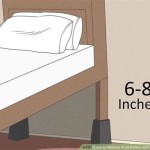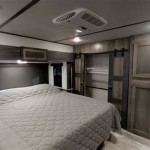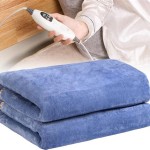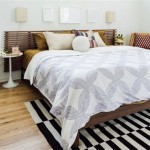Are Ready Beds Safe?
Ready beds, also known as toddler beds, are designed to transition children from cribs to bigger beds. These beds often come with features like guardrails and built-in steps to provide a sense of security for young children. While they offer convenience and a sense of independence for toddlers, questions regarding their safety arise. This article explores the potential safety concerns associated with ready beds and offers insights into how to make them safer for your child.
Potential Safety Concerns with Ready Beds
Despite their convenience, ready beds can pose certain safety risks if not chosen and used responsibly. Some of the key concerns include:
1. Fall Risk: The primary concern with ready beds is the potential for falls. Toddlers are naturally active and curious, and they may accidentally roll or climb out of bed, especially if the guardrails are not high enough or if there are gaps in the construction. Even with guardrails, children can sometimes squeeze through them or climb over them.
2. Suffocation Hazard: Some ready beds feature a mattress that is too soft or excessively thick. This can create a suffocation risk, especially for infants or younger toddlers. The mattress should be firm enough to support the child's weight and prevent them from sinking too deeply into it.
3. Entrapment Hazard: The gaps between the bed frame and the mattress or between the guardrails and the bed frame can pose an entrapment risk. Toddlers can get their limbs or heads stuck in these gaps, leading to injuries or even suffocation.
4. Product Defects: As with any product, poorly manufactured or faulty ready beds can pose safety hazards. Issues like unstable or defective guardrails, sharp edges, or unstable frames can lead to injuries.
Safety Tips for Using Ready Beds
To mitigate the safety concerns associated with ready beds, it is crucial to adopt safety practices:
1. Choose the Right Bed: When selecting a ready bed, prioritize safety over aesthetics. Look for a bed with sturdy construction, high guardrails, and a firm mattress. The guardrails should be at least 16 inches high and should have no gaps or spaces that could allow a child's head or limbs to get trapped. Consider purchasing a bed with a slatted mattress base to ensure proper airflow.
2. Ensure Proper Fit: The mattress should fit snugly in the bed frame, leaving no gaps or spaces for a child to get trapped. Make sure the mattress is firm enough to support the child's weight and prevent them from sinking too deeply into it. A mattress too thick can also create a fall hazard. A good rule of thumb is to choose a mattress that is no more than 4 inches thick.
3. Supervise Your Child: Always supervise your child when they are in or around the ready bed, especially during the transition period. At first, you may even want to sleep in the same room as your child to monitor them. As your child gets older, you can gradually give them more independence, but always maintain a watchful eye.
4. Inspect the Bed Regularly: Regularly check the condition of the bed, paying attention to the guardrails, the frame, and the mattress. Ensure all parts are in good condition and free from damage or wear and tear. Replace any damaged components promptly.
Additional Recommendations
In addition to these basic safety measures, consider these additional tips:
1. Install a Bed Rail: If you are concerned about falls, you can install an extra bed rail on the side of the bed where the guardrails are lower. This will provide additional protection and prevent your child from rolling out of bed.
2. Use a Nightlight: A nightlight can help your child feel less anxious and more secure, especially if they are afraid of the dark. A nightlight can also help you to see if your child is attempting to get out of bed.
3. Talk to Your Child: Explain to your child the importance of staying in bed and the dangers of climbing out. Reinforce safety rules and encourage your child to ask for help if they need to get out of bed.
Ready beds can be a safe and convenient option for transitioning your child from a crib to a bigger bed. By following these safety tips and making sure your child's bed is properly fitted and maintained, you can help ensure that your child enjoys a safe and comfortable sleep environment.
:max_bytes(150000):strip_icc()/Sprout_final-d7f5d8778d9c4d969bf612649605d234.jpg?strip=all)
How Safe Are Floor Beds For Babies And Toddlers

Pros And Cons Of Utilizing A Montessori Style Floor Bed Play Learn Thrive

How To Decide If A Loft Bed Is Right For You

Smart Safety Beds For Special Needs Cubby

How To Move Your Child From Crib Toddler Bed Safely

Montessori Floor Beds Taking Cara Babies

Everything Pas Should Know About Bunk Beds Cuckooland
Bunk Bed Safety Guide Dreams

Everything Pas Should Know About Bunk Beds Cuckooland
Bunk Bed Safety Guide Dreams







